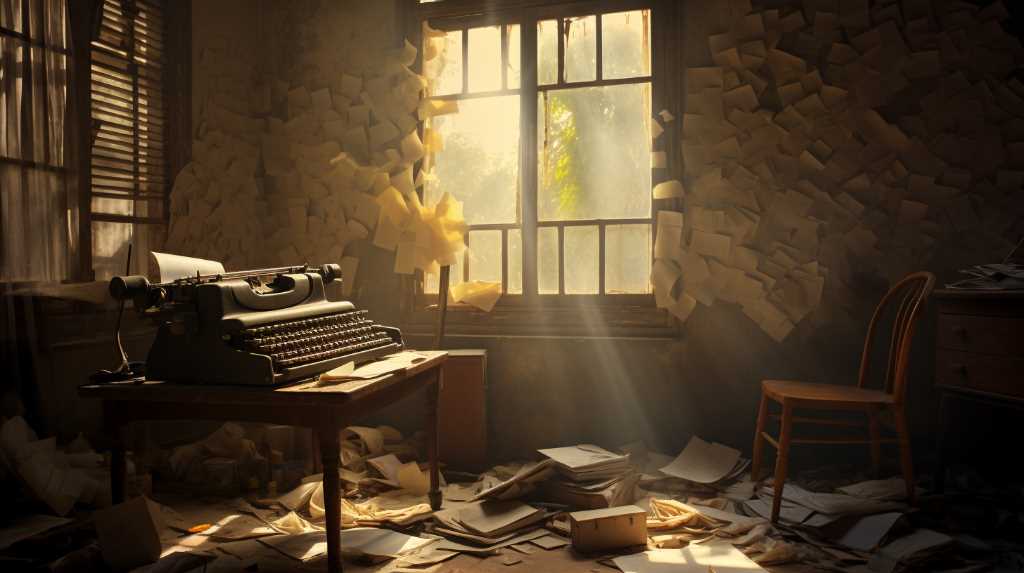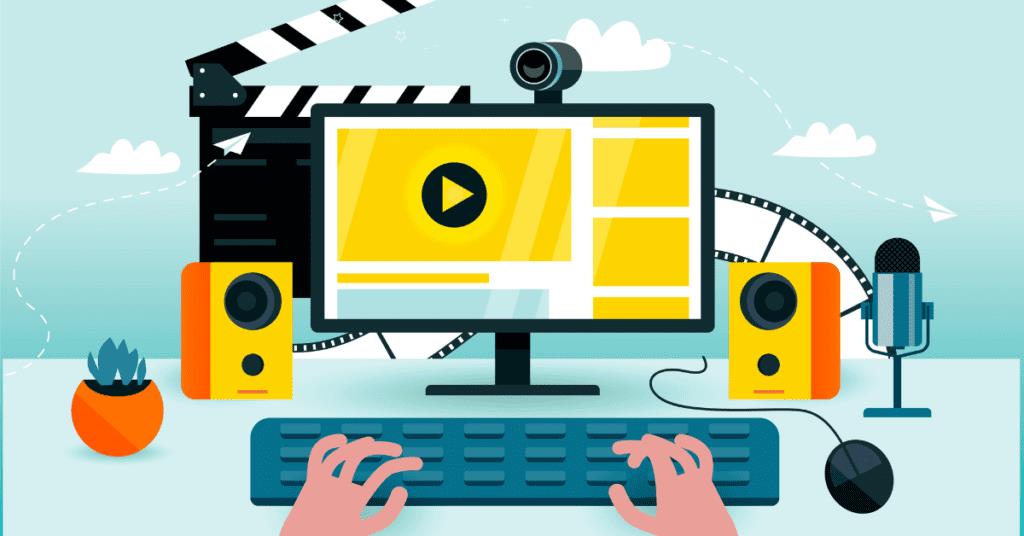
In the ever-evolving world of video content, crafting a script that captivates and engages viewers is essential. The art of script writing requires a delicate balance of creativity, structure, and intention.
This article delves into the realm of cinematic brilliance, offering insightful tips to help you create powerful and compelling video content. From the power of a strong opening to the art of effective pacing, these top 10 script writing strategies will elevate your storytelling and leave a lasting impact on your audience.
The Power of a Strong Opening
The power of a strong opening in video content cannot be overstated as it captivates viewers and sets the stage for an engaging and impactful experience. The importance of a strong hook lies in its ability to grab the audience's attention right from the start, compelling them to continue watching.
A well-crafted hook can be achieved through the use of visual storytelling, which combines compelling visuals with a captivating narrative to create a powerful and immersive experience for the viewer. By using visual elements such as stunning cinematography, vibrant colors, and carefully choreographed shots, video content can instantly captivate the audience and draw them into the story.
This not only creates a memorable viewing experience but also establishes a strong connection between the audience and the content, fostering a sense of freedom and engagement.
Crafting Compelling Characters
Crafting compelling characters requires a deep understanding of their motivations, flaws, and desires, allowing them to resonate with audiences on an emotional level. Character development techniques play a crucial role in building relatable protagonists that captivate viewers' attention and create a lasting impact.

By exploring the internal conflicts, fears, and aspirations of characters, writers can create multidimensional individuals that audiences can empathize with and root for.
One effective technique in character development is the use of flaws. Flaws make characters more relatable and human, as they showcase their vulnerabilities and imperfections. These flaws can range from physical limitations to personality traits that hinder their growth or success. By giving characters flaws, writers provide opportunities for growth and transformation throughout the story.
Another technique is to establish clear and relatable motivations for characters. Understanding what drives a character's actions and decisions helps to create a strong connection between the audience and the protagonist. By aligning the character's motivations with universal desires, such as love, acceptance, or freedom, writers can elicit an emotional response from viewers.
Mastering Dialogue and Conversation
Mastering dialogue and conversation is essential in creating authentic and engaging storytelling.
Naturalistic dialogue techniques, such as using realistic speech patterns and colloquialisms, can bring characters to life and make their interactions feel genuine.
Naturalistic Dialogue Techniques
Effortlessly incorporating naturalistic dialogue techniques into a script can truly elevate the authenticity and believability of the characters' conversations. Realistic dialogue techniques in film are essential for creating authentic conversations in movies.
Here are some key tips for achieving this:

- Embrace improvisation: Allowing actors to ad-lib certain lines or responses can add a genuine spontaneity to the dialogue.
- Research and observation: Understanding how people speak in real life situations can help in crafting dialogue that feels natural and relatable.
- Use subtext: Characters don't always say exactly what they mean. Including subtle hints and undertones in the dialogue can add depth and nuance to the conversation.
Engaging Character Interactions
Creating compelling character interactions involves skillfully navigating the intricacies of dialogue and conversation, ensuring that the exchanges are both engaging and authentic. To achieve this, it is essential to develop authentic chemistry between the characters. This can be done by carefully crafting their personalities, motivations, and backstories in a way that allows for organic and believable interactions. By understanding the dynamics between the characters, writers can create compelling conflicts and resolutions that keep the audience invested.
In addition to developing authentic chemistry, incorporating comedic moments can also enhance character interactions. Humor can serve as a powerful tool to break tension, reveal character traits, and create memorable moments. Well-timed comedic exchanges can add depth and relatability to the characters, making them more likable and enjoyable to watch.
Overall, creating engaging character interactions requires a delicate balance of authenticity and entertainment value. By developing authentic chemistry and incorporating comedic moments, writers can craft compelling and memorable exchanges that captivate audiences.
Creating Compelling Conversations
Through meticulous attention to detail and thoughtful character development, writers can construct captivating conversations that draw in audiences and leave a lasting impact. Creating authentic dialogue is a skill that requires an understanding of human nature and the ability to translate it onto the page.
To develop multi-dimensional characters, writers should consider the following:
Unique Voice: Each character should have a distinct way of speaking that reflects their personality, background, and experiences.
Subtext: Conversations should have underlying meanings and unspoken emotions, adding depth and complexity to the dialogue.

Conflict and Tension: Engaging conversations often involve conflict, whether it's a difference of opinions, conflicting goals, or unresolved issues.
Creating Tension and Conflict
Frequently encountered in engaging narratives, tension and conflict serve as pivotal elements that propel the storyline and captivate the audience's attention.
Creating suspense and escalating conflict not only heighten the stakes but also create an emotional investment for the viewers. By introducing obstacles and challenges, the scriptwriter can effectively keep the audience on the edge of their seats, eagerly anticipating the resolution.
Skillful use of tension and conflict can create a sense of urgency and unpredictability, making the narrative more compelling. It is important to carefully craft these elements, ensuring that they are believable and serve a purpose in the overall story.
Structuring Your Story for Maximum Impact
A well-crafted narrative structure is essential for ensuring maximum impact in your story, allowing for the seamless integration of key plot points and character development to create a cohesive and impactful experience for the audience. Structuring conflict and creating narrative tension are crucial elements in achieving this goal.
Structuring conflict:
- Introduce the main conflict early on to hook the audience and create a sense of anticipation.
- Build tension gradually, escalating the conflict through obstacles and challenges for the characters.
- Provide resolution and closure, allowing the audience to reflect on the conflict and its outcomes.
Creating narrative tension:

- Use pacing techniques to control the flow of information and maintain suspense.
- Develop complex characters with conflicting goals and motivations.
- Utilize dramatic irony and foreshadowing to engage the audience and keep them guessing.
Using Visuals to Enhance the Narrative
With the strategic use of carefully curated visuals, writers can effectively enhance the narrative, immersing the audience in a visually captivating storytelling experience. Using visuals creatively allows for a deeper emotional connection between the audience and the story being told.
Visual elements such as color, composition, and lighting can evoke specific moods and feelings that words alone may struggle to convey. Whether it's a poignant close-up of a character's face or a sweeping panoramic shot of a breathtaking landscape, visuals have the power to engage the audience on a visceral level.
Balancing Action and Emotion
Balancing action and emotion in cinematic storytelling is essential for creating compelling and immersive narratives.
Emotional action sequences can inject depth and resonance into a film, allowing viewers to connect with the characters on a visceral level.
Character-driven fight scenes, on the other hand, provide opportunities to showcase the internal conflicts and motivations of the protagonists, adding layers of complexity to the story.
Tension through vulnerability, when characters reveal their true emotions during intense action sequences, can heighten the stakes and create a more authentic and impactful viewing experience.
Emotional Action Sequences
Incorporating well-executed emotional action sequences can enhance the overall cinematic experience, allowing viewers to empathize with the characters and amplifying the impact of the narrative. When done effectively, these sequences can contribute to character development and provide a deeper understanding of their motivations and emotions.

In the realm of visual storytelling, emotional action sequences serve as powerful tools for conveying complex emotions that may be difficult to express through dialogue alone. They can captivate the audience, drawing them into the story and creating a more immersive viewing experience.
Furthermore, emotional action sequences can create a sense of tension and excitement, keeping the audience engaged and on the edge of their seats. They can also serve as pivotal moments in the plot, driving the story forward and adding depth to the narrative.
Overall, emotional action sequences are vital components of cinematic storytelling, allowing filmmakers to evoke a range of emotions and connect with the audience on a deeper level.
Character-Driven Fight Scenes
The choreography of character-driven fight scenes masterfully showcases the physical prowess and emotional intensity of the characters, ensuring a riveting and authentic viewing experience. These scenes provide a unique opportunity for character development, allowing the audience to witness the growth and transformation of the protagonists.
Choreography techniques play a crucial role in achieving this effect. By integrating the characters' personalities and motivations into their fighting styles, the choreographers can bring out the nuances of their individual journeys. For example, a quick and agile fighter may represent a character who relies on cunning and wit, while a powerful and brute force style may reflect a character driven by raw strength and determination.
Through the careful execution of choreography, these fight scenes not only entertain but also deepen the audience's understanding and connection to the characters, making them an essential element in storytelling.
Tension Through Vulnerability
Elevating the emotional stakes in action sequences, vulnerability can be skillfully wielded to create riveting tension and evoke a deep sense of empathy from the audience. By exposing characters' emotional vulnerabilities during moments of conflict, filmmakers tap into our innate desire to connect with the human experience. This powerful tool not only adds depth to the narrative but also enhances the overall cinematic experience.

Vulnerability in Conflict: When characters show vulnerability in the midst of a conflict, it creates a stark contrast that heightens the tension and captures the audience's attention. It humanizes the characters and makes their struggles more relatable.
Emotional Vulnerability: By delving into a character's emotional vulnerability, filmmakers allow the audience to connect with their innermost thoughts and feelings. This creates a strong bond between the viewer and the character, fostering empathy and investment in their journey.
Subverting Expectations: Using vulnerability in conflict can also subvert audience expectations. When a seemingly invincible character reveals their vulnerabilities, it adds complexity and unpredictability to the story, keeping the audience engaged and on the edge of their seats.
Building a Memorable Climax
Crafting a suspenseful and emotionally charged climax is essential for leaving a lasting impression on the audience. In the realm of storytelling, the climax serves as the culmination of the narrative, where all the conflicts and tensions built throughout the plot reach their peak. It is the defining moment that holds the audience's attention and keeps them on the edge of their seats.
By creating suspense, the writer can effectively engage the viewers and heighten their emotional investment in the story. However, a satisfying resolution is equally important. It is the resolution that provides closure to the audience and ties up any loose ends, leaving them with a sense of fulfillment.
Balancing suspense and resolution is crucial in creating a climax that captivates and resonates with the audience.
The Art of Effective Pacing
The art of effective pacing plays a crucial role in capturing and retaining audience attention. It involves finding the right balance between speed and slow, creating a rhythm that builds tension and enhances the overall impact of a story.

Pacing is not only evident in the script but also in the editing process, where the timing and sequencing of shots can greatly influence the audience's emotional engagement.
Speed Vs. Slow: Finding Balance
While it is essential to maintain viewers' interest through a well-paced narrative, finding the right balance between speed and slow moments is crucial in creating impactful video content. Pacing techniques play a vital role in captivating the audience and keeping them engaged from start to finish.
Here are three key considerations when it comes to speed vs. slow in video content creation:
Variety: Incorporating a mix of fast-paced and slow-paced moments helps create a dynamic viewing experience. Alternating between high-energy action sequences and slower, reflective scenes can create a powerful emotional impact.
Context: The pace should be in sync with the content and the story being told. Rapid cuts and fast-paced scenes might work well for action-packed videos, while slower pacing can be effective for building tension or emphasizing emotions.
Timing: Knowing when to speed up or slow down is crucial. Moments of high intensity or suspense often benefit from quick cuts and fast pacing, whereas slower moments allow for character development and introspection.
Building Tension Through Pacing
To create a palpable sense of anticipation, content creators can strategically employ varying pacing techniques, such as utilizing suspenseful pauses and well-timed accelerations.

Creating suspense is essential for engaging audiences and maintaining their interest throughout the content. By carefully controlling the rhythm and tempo of the narrative, creators can build tension and keep viewers on the edge of their seats.
Suspenseful pauses allow the audience to process information and anticipate what will happen next, heightening their emotional involvement.
Well-timed accelerations, on the other hand, inject energy and excitement into the storytelling, propelling the plot forward and intensifying the suspense.
However, it is crucial to maintain suspense throughout the content to sustain the audience's attention. This can be achieved by carefully balancing moments of calm with moments of heightened tension, ensuring that the audience remains invested in the narrative until the very end.
Impact of Rhythmic Editing
Our understanding of the impact of rhythmic editing on audience engagement has evolved with advancements in technology and storytelling techniques. Rhythmic editing techniques in music videos have long been used to create a sense of energy and excitement, capturing the essence of the music and captivating the audience. In short films, rhythmic editing can be utilized to convey emotion, build tension, and enhance the overall viewing experience.
Rhythmic editing techniques in music videos:
- Quick cuts and fast-paced editing to match the beat of the music
- Visual effects and transitions synchronized with the rhythm
- Strategic use of slow-motion and speed ramping to create dynamic visuals
The impact of rhythmic editing in short films:

- Enhances storytelling by creating a sense of rhythm and pacing
- Helps to establish the mood and atmosphere of the film
- Keeps the audience engaged and invested in the narrative
Polishing Your Script: Editing and Revising Techniques
The process of editing and revising a script is an integral part of ensuring its quality and effectiveness. Effective editing techniques and revising strategies can transform a mediocre script into a masterpiece.
One important editing technique is to eliminate unnecessary or repetitive dialogue, ensuring that every line serves a purpose and propels the story forward.
Additionally, revising strategies such as refining character arcs and tightening plot structure can enhance the overall narrative flow.
Another crucial aspect of script editing is focusing on pacing and rhythm, ensuring that the script maintains a dynamic and engaging momentum.
By incorporating these editing techniques and revising strategies, writers can elevate their scripts to new heights, captivating audiences and leaving a lasting impact.
The freedom to revise and edit allows for continuous improvement, resulting in a polished and compelling final product.
Frequently Asked Questions
How Long Should a Strong Opening Be in a Script?
Crafting an impactful opening scene in a script is crucial for capturing the audience's attention from the start. The length of a strong opening is subjective and depends on the specific story and genre, requiring a balance between conciseness and detailed introduction.

What Are Some Techniques for Developing Multi-Dimensional Characters?
Character development techniques are essential for creating multi-dimensional characters. By exploring their backstory, motivations, and desires, writers can give characters depth and complexity. Character arc evolution allows for growth and transformation throughout the story, engaging audiences in a compelling narrative.
How Can I Make Dialogue Sound Natural and Engaging?
Creating authentic dialogue is crucial for engaging video content. By employing effective storytelling techniques, writers can make dialogue sound natural and engaging. This enhances the overall cinematic experience and connects viewers on a deeper level.
What Are Some Effective Ways to Create Tension and Conflict in a Script?
Creating suspense and building emotional stakes are essential in creating tension and conflict in a script. By using effective storytelling techniques such as unexpected plot twists and high-stakes conflicts, writers can engage audiences and keep them on the edge of their seats.
Are There Specific Guidelines for Structuring a Story to Maximize Its Impact?
Story structure guidelines and storytelling techniques are essential for maximizing the impact of a narrative. By strategically organizing plot points, character arcs, and pacing, a story can captivate audiences and deliver a powerful message that resonates long after the credits roll.
 Network marketingWork from home jobsEntrepreneurshipAffiliate marketingFinancial freedomPrivacy PolicyTerms And Conditions
Network marketingWork from home jobsEntrepreneurshipAffiliate marketingFinancial freedomPrivacy PolicyTerms And Conditions
